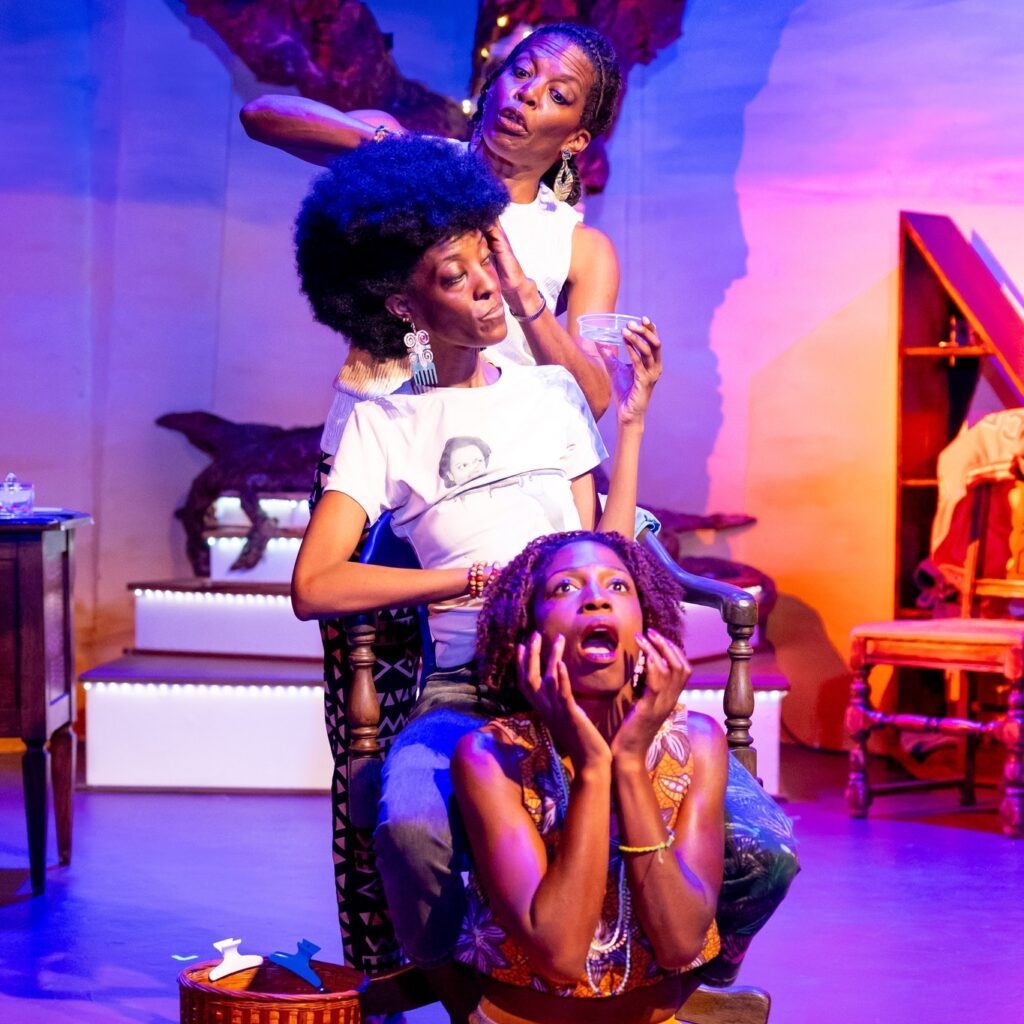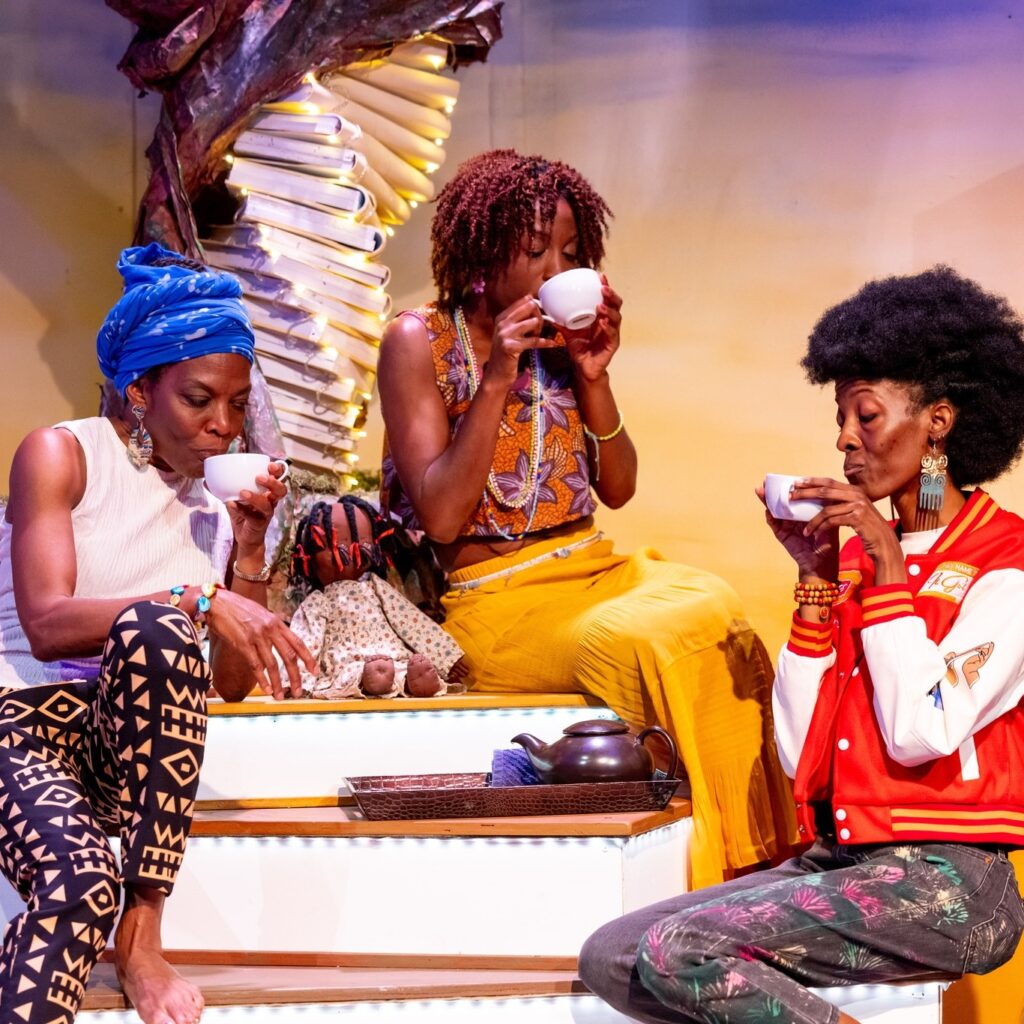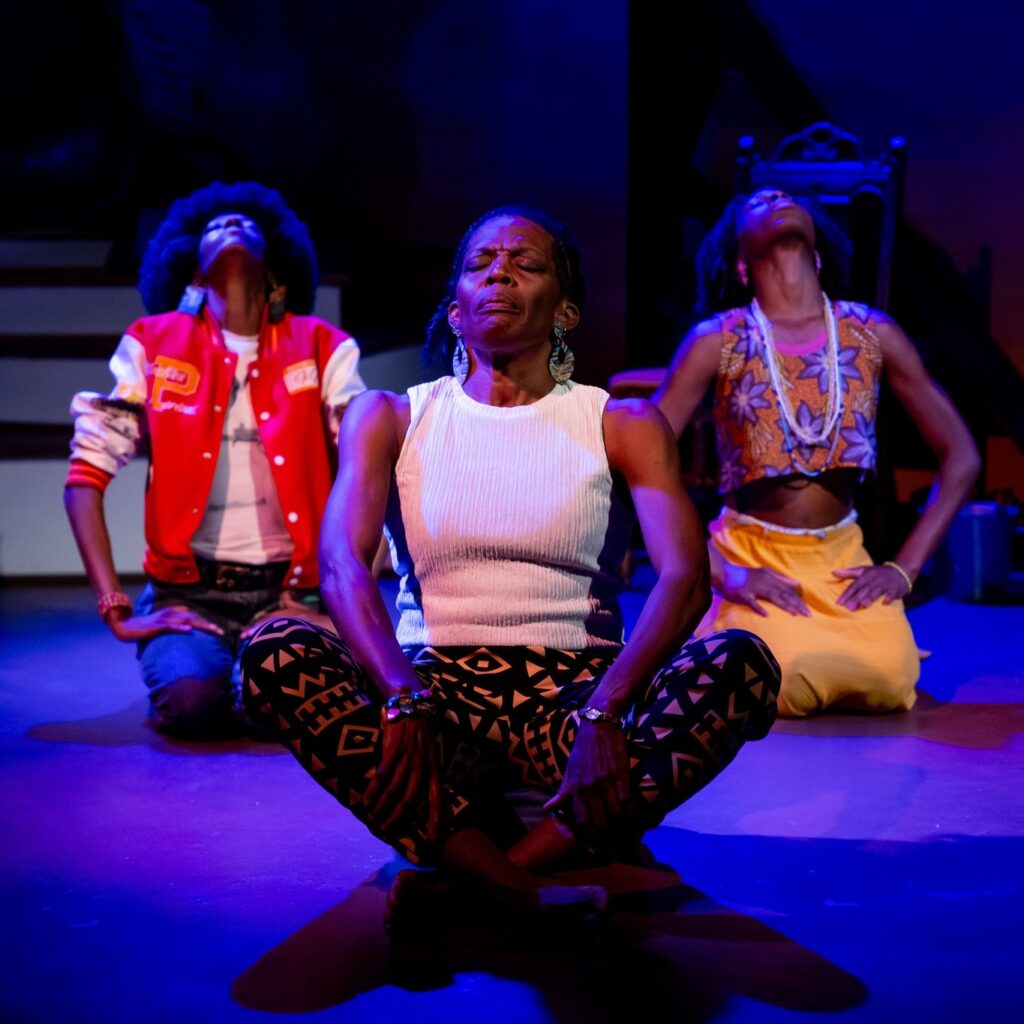Through the Black woman’s body, we’re given an intimate look at the multiple flavors, hues and memories of aging.
There’s a moment in Dr. Lisa B. Thompson’s {The Black Feminist Guide to the Human Body} where our lead narrator, Dr. Beatrice “Bea” Free (played with elegance and naked veritas by acclaimed actress Nadine Mozon), invites us to embrace ourselves. Open our arms and wrap them around our shoulders, cocooning us in our own vulnerability, to embrace fearlessly our own strength.

{The Black Feminist Guide} is one of those plays that come along once in a lifetime. Very rarely do playwrights really delve into the masterpiece theater that is living in the body of a Black woman. This falls far beyond simply showing women living within their pain; it’s a story about the multilayered generational experience of being a woman-identified human wrapped in multiple shades of nighttime, Luster’s Pink and Blue Magic. A choreopoem, {The Black Feminist Guide} makes the poetry within Thompson’s script tangible. One can reach out and touch this play, and the actors themselves take moments to touch the audience as well.
Thompson has a storied history of creating art that reveres and honors Black humanness, specifically if that human identifies as a woman. While still a college student, she produced her first visual commentary on Black feminist ideology, {Single Black Female}. The two-woman show made its debut at San Francisco’s legendary Theatre Rhinoceros in 1999, under the direction of a fellow award winner in the making, Colman Domingo.
“I love us,” she says, her voice warm like cocoa in winter. “I really love us. Aren’t we amazing? So there’s that, I think. Looking at what’s in the world artistically, I don’t see us. That’s not to say those others {aren’t} Black women, but they’re not only ones I recognize, who I know intimately as well as the ones I put on stage.’”
This desire to create narratives that don’t focus solely on generational trauma, as most mainstream forms of media are wont to do, defines Thompson’s career, leading to her most recent adaptation of {The Black Feminist Guide}.

Along with bracing humor, compliments of character Dee, a representation of Dr. Free’s spirit (and played with snap, crackle and palpable moments of vulnerability by Hayley Armstrong), the play embraces sensuality, feminine energy and softness in Cee Cee (embodied with breathtaking allure by the play’s movement director, Sadé M. Jones). It’s this insistence upon dance, upon play that gives {The Black Feminist Guide} its heart.
“I wanted it to be a choreopoem, [an artform] which was basically created by the great legendary Black feminist poet, novelist and playwright, Ntozake Shange, who wrote {For Colored Girls Who Have Considered Suicide / When the Rainbow Is Enuf},” Thompson says. “She also happened to be one of my teachers. So this idea of telling this unconventional story and using the body and movement, it’s a song to tell a story of Black womanhood. It’s my way of paying homage to her as well.”
{The Black Feminist Guide to the Human Body} is neo-soul: Goapele getting closer to her dreams; Hanifah Walidah embracing us at a house party; Floetry and D’angelo soothing what ails us. Move. Dance. Sing. Cry. Laugh. All calls to action that act as the foundation of Thompson’s homage to the mentors in her life, particularly legendary theater director Shirley Jo Finney. Women who never had the opportunity to truly enjoy the fruits of all of their hard work, all of that pressure to be twice as good to get half as much, to be the strong Black woman, to be the nurturer.
The opening sequence, a question, an image of a mother climbing out of the tub, naked and needing her daughter to assist her. It’s so easy to think of one’s own mother figure, to hiccup on the shards of a broken heart, spurred on by the mere suggestion of losing the first icon of “woman” in one’s life. As the three generations of Black womanhood onstage start doing their hair, the audience collectively sighs and smiles at the memory of too hot combs and too tight braids. We dance to Frankie Beverly and Bel Biv Devoe. This isn’t just a play. This is church, testimony. Hallelujah, amen over Sunday dinner. This is home.

{The Black Feminist Guide to the Human Body} forces the audience to reckon with their inevitability. More than that, it’s a reminder that we are human, and our humanhood is a blessing; being able to grow old in our human form is a blessing.
“That’s the journey of life, and that’s also the part of this piece about aging. If you’re fortunate to really get to the point where you love yourself at all sizes, because you’re gonna be many different ones, all skin, pimply, the age lines whatever, loving yourself through it all. You’re only gonna get one. How are you going to treat it? How are you going to talk to it and look at it? That’s the love letter to myself.”
{The Black Feminist Guide to the Human Body}:
PRODUCTION
Words and lyrics by Lisa B. Thompson, Ph.D.
Original songs by Guthrie P. Ramsey, Jr.; Vincent Anthony and Alyah Above
Dramaturgy by Virginia Grise
Musical direction by Akina Adderley
Co-directed by Na’Tosha De’Von and Rudy Ramirez
Movement direction by Sadé M. Jones
Scene design by Rachel Finley
Costume design by Desireé Humphries
Sound design by Johann Solo
Video design by Roma Flowers
Hair design by Seidah Williams
CAST
Dr. Beatrice “Bea” Free played by Nadine Mozon
Cee Cee played by Sadé M. Jones
Dee played by Haley Armstrong








